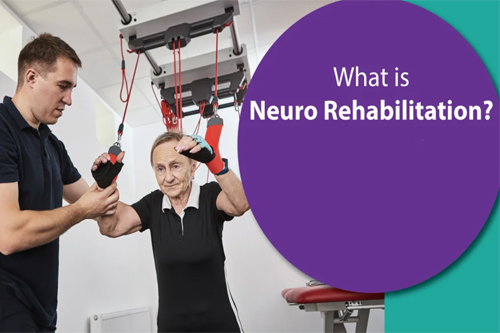
Neurorehabilitation
Neurorehabilitation is a specialized medical field that focuses on helping individuals recover from neurological disorders, injuries, or diseases. As the number of people affected by strokes, traumatic brain injuries (TBI), spinal cord injuries, and neurodegenerative conditions continues to rise, the importance of neurorehabilitation cannot be overstated. Moreover, this multidisciplinary approach aims to restore function, improve mobility, and enhance the overall quality of life for patients.
Why Is Neurorehabilitation Important?
To begin with, neurological disorders can significantly impact an individual’s ability to perform daily tasks. For instance, a stroke survivor may struggle with movement and speech, while a person with a spinal cord injury might face mobility challenges. Therefore, neurorehabilitation provides a structured recovery plan to help patients regain their independence. Additionally, it integrates medical expertise, technological advancements, and personalized therapy to ensure the best possible outcomes.
Key Components of Neurorehabilitation
First and foremost, physical therapy plays a crucial role in neurorehabilitation. By focusing on restoring movement, balance, and coordination, physical therapists help patients regain mobility. Furthermore, techniques such as strength training, gait exercises, and neuromuscular re-education assist in improving motor function.
Similarly, occupational therapy aims to help individuals regain the ability to perform everyday tasks. Whether it is dressing, eating, or writing, therapists provide strategies to enhance fine motor skills and cognitive function. Moreover, adaptive tools and assistive devices can make these activities easier and more manageable.
Notably, many neurological conditions affect speech and language abilities. In such cases, speech-language pathologists work with patients to improve communication, swallowing functions, and cognitive-linguistic skills. Additionally, alternative communication methods, including sign language and communication devices, may be introduced for better interaction.
Beyond physical recovery, cognitive rehabilitation addresses memory, attention, and problem-solving deficits. Through brain training exercises, neurofeedback, and structured cognitive therapy, patients can enhance their mental functions and regain confidence in daily activities.
Equally important, neurological conditions can lead to emotional distress, depression, and anxiety. Therefore, neurorehabilitation incorporates psychological counseling, support groups, and mindfulness techniques to help patients cope with mental health challenges. Furthermore, involving family members in therapy sessions fosters a supportive recovery environment.
Advanced Technologies in Neurorehabilitation
Another breakthrough in rehabilitation is the use of virtual reality. By simulating real-life environments, VR therapy improves motor skills, coordination, and cognitive functions in a highly engaging manner. Additionally, patients find VR-based therapy more interactive and enjoyable, leading to better adherence to rehabilitation programs.
Furthermore, brain-computer interface technology allows individuals with severe disabilities to control devices using their brain signals. As a result, patients with paralysis can interact with computers, robotic limbs, or communication systems, thereby improving their quality of life.
The Role of a Multidisciplinary Team in Neurorehabilitation
- Neurologists: Diagnose and manage neurological disorders.
- Physiatrists: Specialize in physical medicine and rehabilitation.
- Physical and Occupational Therapists: Focus on improving movement and daily activities.
- Speech-Language Pathologists: Address communication and swallowing disorders.
- Neuropsychologists: Provide emotional and cognitive support.
- Social Workers and Case Managers: Assist with community reintegration and patient advocacy.
Future Trends in Neurorehabilitation
Additionally, remote rehabilitation programs are gaining traction, allowing patients to receive therapy from the comfort of their homes. With telehealth platforms, therapists can guide patients through exercises, monitor progress, and provide real-time feedback.
Conclusion
In summary, neurorehabilitation is a vital component of recovery for individuals with neurological disorders. By integrating advanced therapies, technological innovations, and a holistic care approach, patients can regain function, independence, and confidence. Moreover, as research continues to advance, the future of neurorehabilitation looks even more promising, offering new hope for those affected by neurological conditions.Schedule your Consultation with Dr. Ritesh Nawkhare
